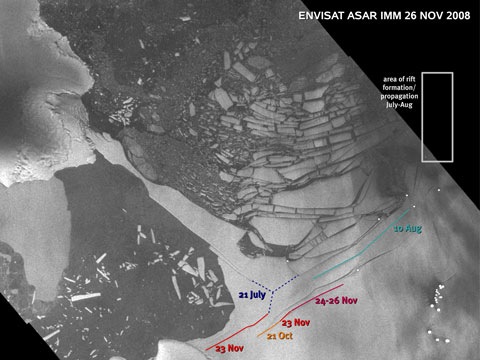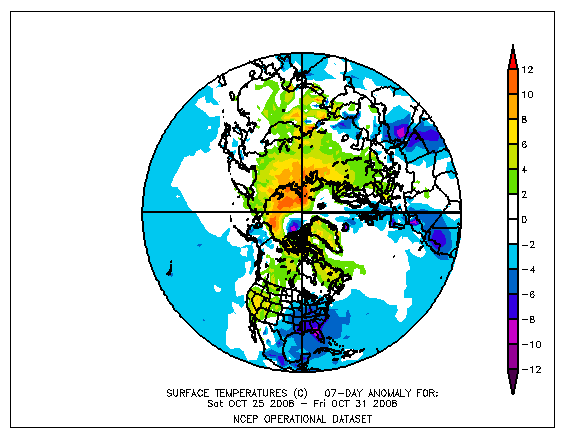This posting is based on a Waikato Times column written in July.
The Royal Society in the UK awarded its 2008 science writing prize to Mark Lynas for his global warming book Six Degrees: Our Future on a Warming Planet. I found the book telling when I read it last year, and it was good to see it receive this confirmation.
Lynas’s first book High Tide, published in 2004, grew out of three years visiting parts of the globe where the signs of global warming were becoming evident – Alaska, Tuvalu, Mongolia, Peru, the US. Six Degrees had a different genesis. It is the result of many months in the Radcliffe Science Library at Oxford trawling through scientific journals to find the peer-reviewed papers on which the book is entirely based. The source material ranges from computer model projections to studies of climate in the past. Lynas is not a scientist, but he makes it his business to adequately understand and interpret what the scientists have written in their specialist fields.
Sceptics often scoff at computer models as somehow fiddled in advance, but Lynas points out that they are based not on subjective judgements by their constructors but on the fundamental laws of physics. They have grown increasingly sophisticated and the insight they offer into likely future conditions on the planet is something humanity has never had access to before. One check on their accuracy is ‘hindcasting’ the 20th century, and some of the most powerful recent models have done this with almost unerring accuracy. Not that Lynas suggests that they are infallible in their forecasts.
Six Degrees is a highly readable narrative for the general reader, tracking through what changes can likely be expected from each degree of global warming from one degree through to six degrees, the upper limit for worst case scenarios.
Even at what may seem comparatively low rises of one or two degrees centigrade he finds plenty to cause alarm. A few of his examples: possible desertification and abandonment of agriculture over millions of square kilometres in the US, an extremely hot and drought-ridden Mediterranean Europe, an ice-free Arctic ocean with implications still difficult to understand, the bleaching and likely death of many coral reefs, major loss of food production in India, serious population displacement in Bangladesh. On through three and four degrees the book points to desertification intensifying in many places, water supply severely declining in Pakistan, the Amazon rainforest dying, far more of Australia burning and suffering serious drought, the West Antarctic ice sheet facing collapse, sea levels rising threateningly. Five and six degrees hardly bear contemplating as the possibility is faced of methane hydrates on subsea continental shelves becoming destabilised and venting into the atmosphere, adding an enormous feedback to global warming.
As a writer for the general public Lynas doesn’t shrink from putting emotional depth into his analysis. He explains in a Guardian column: “If I’ve read a paper about coral bleaching or precipitation trends in the Sahel, I need to be able to describe what this means in the real world – grey weed creeping over once-vibrant coral reefs, and Sudanese herders struggling to feed their children as their livestock starves around them and a dust-storm looms on the horizon.” However he sees his first duty as accurately representing what he has read in the scientific literature. The Royal Society judges are clear that he has met this test. They state that the book provides a good overview of the latest science on the issue. An interesting response came from Eric Steig, one of the contributing scientists to the Real Climate website, when he reviewed the book in Conservation Magazine. Initially he had assumed from news reports that the book was alarmist and probably not worth reading; however, after reading it he reported it firmly based on published scientific literature and nowhere exceeding those bounds. Alarming, yes, but not alarmist.
There is no escaping that the science is alarming. That is why this issue is of such overwhelming importance. Yet like most writers on the subject Lynas hopes that we can yet avoid the worst prospects. There is already unavoidable further warming ahead of between 0.5 and 1 degree Celsius, but it is possible that we might manage a ‘safe landing’ within the 1-2 degree corridor if appropriate action is begun now to drastically reduce greenhouse gas emissions.
This is the point at which the question moves from science into the realm of the political. We largely know how the needed reductions could be achieved. The question is whether we find the collective will to do it. The fact that that is still an open question indicates the full reality of the science has not dawned for enough of us. Books like Six Degrees need wide readership. Hopefully the Royal Society prize will assist that.
It is worth noting that Six Degrees was published in America by National Geographic, which has also made a television documentary based on the book and broadcast on the National Geographic channel internationally. On a lighter note Lynas also achieved minor fame as a somewhat younger man in 2001 by throwing a cream pie at Bjorn Lomborg, the ‘sceptical environmentalist’. “I wanted to put a Baked Alaska in his smug face in solidarity with the native Indian and Eskimo people in Alaska who are reporting rising temperatures, shrinking sea ice and worsening effects on animal and bird life.”


 Time for an Arctic update and a bit of “original” research. There’s been quite a bit of polar news around, and a rapid freeze-up is underway in the Arctic – so rapid that
Time for an Arctic update and a bit of “original” research. There’s been quite a bit of polar news around, and a rapid freeze-up is underway in the Arctic – so rapid that  Atmospheric methane levels “shot up” in 2007, according to a paper in this week’s Geophysical Research Letters (
Atmospheric methane levels “shot up” in 2007, according to a paper in this week’s Geophysical Research Letters (